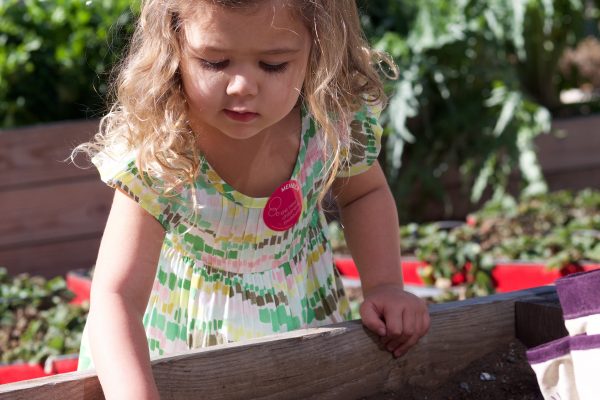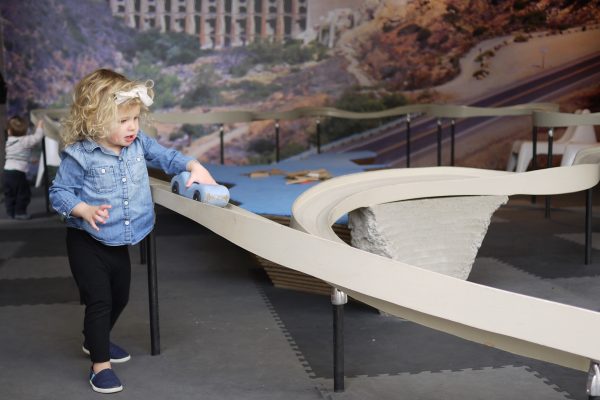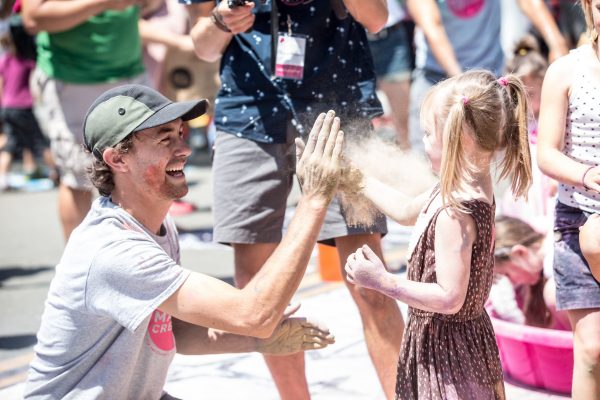do it yourself: homemade ice cream in a bag
Cool off this summer with delicious homemade ice cream made from simple ingredients and in a bag! Use cream, sugar, vanilla, ice and salt to make this tasty treat. Then dress it up with your favorite toppings to enjoy with friends and family!
guidelines + materials
AGE: 3+ (with adult support)
TIME FRAME: 30 minutes
SUPPLIES:
- 1 cup Half & Half (or Heavy Cream)
- 2 tbsp Sugar
- ½ tsp Vanilla Extract
- 3 cups Ice
- 1/3 cup Rock Salt (or Table Salt)
- Gloves (for you and your little one)
- Sandwich Bag
- Freezer Bag
- Plastic Cup (for holding ice cream sandwich bag as you pour)
- Measuring Cups and Spoons
- Flavors for Adding (optional) – e.g. Chocolate
- Mix-Ins (optional) – e.g. Nuts or Marshmallows
- Bowls and Spoons (for serving your ice cream)
directions
1. Create the ice cream mixture. Place the sandwich bag into the top of a tall plastic cup with the edges of the bag hanging over the sides. Pour the Half & Half, sugar and vanilla extract into the bag. Remove the bag from the cup and carefully seal it, while squeezing out the excess air.
2. Set up the ice cream for freezing. Grab a freezer bag and put in the ice and rock salt. Place the sealed sandwich bag with the ice cream mixture into the freezer bag containing the ice and salt. Seal the freezer bag and set it aside while you put on your gloves.
3. Freeze and form the ice cream. Set a timer for 7 minutes and begin shuffling the bag and the ice inside it around in your hands. Have fun moving the bag around in your hands and slowly forming the ice cream. Notice as the cream mixture solidifies. After 7 minutes, if your cream mixture is still not as thick as you’d like it to be, continue to shuffle the ice around for another 2 – 3 minutes. Once done, remove the sandwich bag from the freezer bag and gently rinse it under cold water to remove the salt residue. Place the ice cream in the freezer for approximately 30 minutes to fully set.
4. Dress up your ice cream and enjoy! If flavoring your ice cream, add your flavors and mix-ins after your ice cream has set. You can also stretch your ice cream by mixing it with milk in a blender for a delicious milkshake. Eat up and enjoy!
Additional Learning Activities (Grades K – 2)
What’s the Science?
The process of making your own ice cream in a bag involves the states of matter and how they shift. When you’re making ice cream, the lower temperature of the ice and salt mixture is cold enough to change the state of the cream from a liquid to a solid. With your child, explore the reasons behind this happening and experiment with making changes to your approach to test their effects. Pose a question to investigate, try it out and record your observations. For example: What happens when you remove the salt from the recipe?
The Cool History of Ice Cream
It’s believed that ice cream was first created over 2,500 years ago in Persia. Since that time, it’s been a part of many countries and cultures throughout the world. Using online resources or books, work with your child to learn about and explore the interesting history of this much-loved tasty treat.
Select a Story!
Reading is a wonderful vehicle for learning and for introducing new ideas to learners. Select engaging and age-appropriate books that feature ice cream and related stories to read to your child before and/or after the ice cream making activity.
Recommended Related Reading (Ages 3 – 8):
- Curious about Ice Cream by Bonnie Bader
- Saffron Ice Cream by Rashin Kheiriyeh
- Isaac’s Ice Cream Tree by Angela Henderson and illustrated by Rachael Koppendrayer
CA State Standards
CA Arts Standards for Physical Sciences (Grades K – 1)
Kindergarten
- Students know water can be a liquid or a solid and can be made to change back and forth from one form to the other.
- Scientific progress is made by asking meaningful questions and conducting careful investigations. As a basis for understanding this concept and addressing the content in the other three strands, students should develop their own questions and perform investigations.
First Grade
- Materials come in different forms (states), including solids, liquids and gases.
- As a basis for understanding this concept:
a. Students know solids, liquids and gases have different properties.
b. Students know the properties of substances can change when the substances are mixed, cooled or heated.
Scientific progress is made by asking meaningful questions and conducting careful investigations. As a basis for understanding this concept and addressing the content in the other three strands, students should develop their own questions and perform investigations.
Students will:
- Draw pictures that portray some features of the thing being described.
- Record observations and data with pictures, numbers or written statements.
- Record observations on a bar graph.
- Describe the relative position of objects by using two references (e.g. above and next to, below and left of).
- Make new observations when discrepancies exist between two descriptions of the same object or phenomenon.



